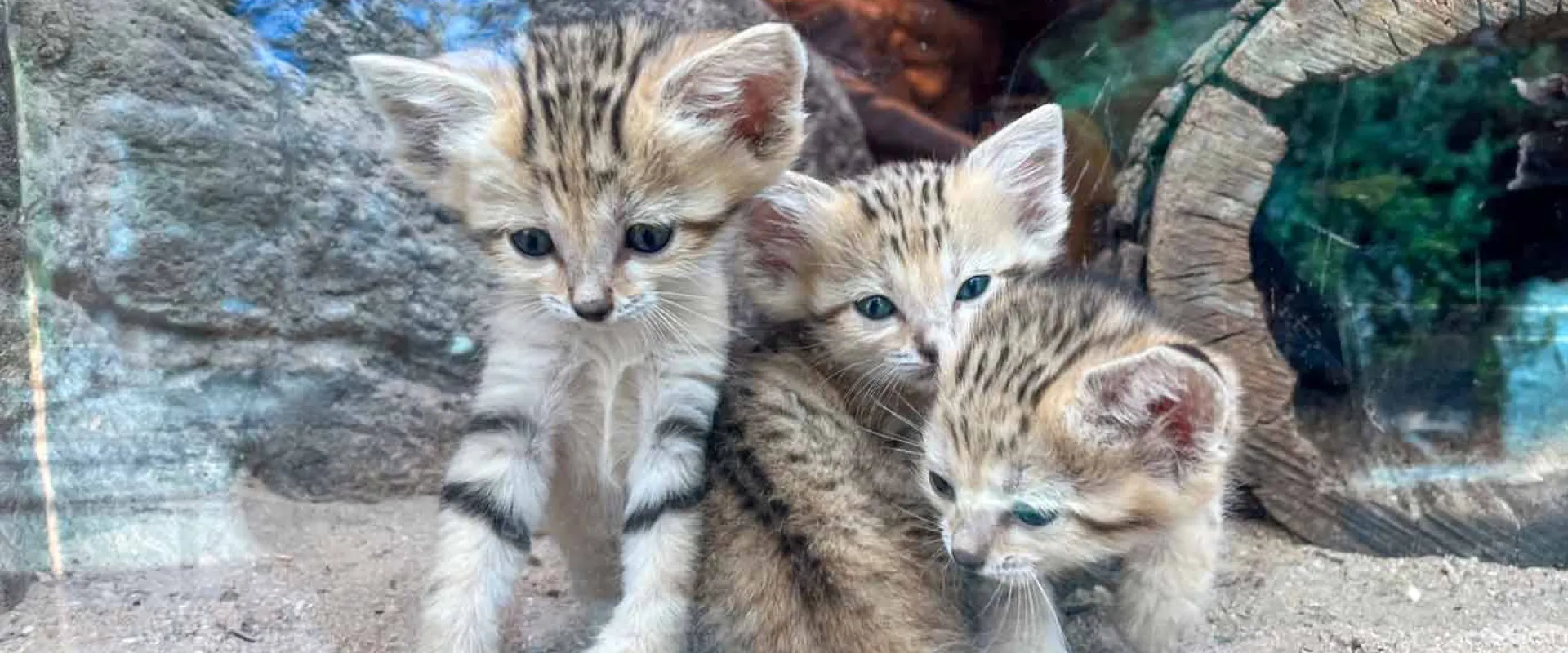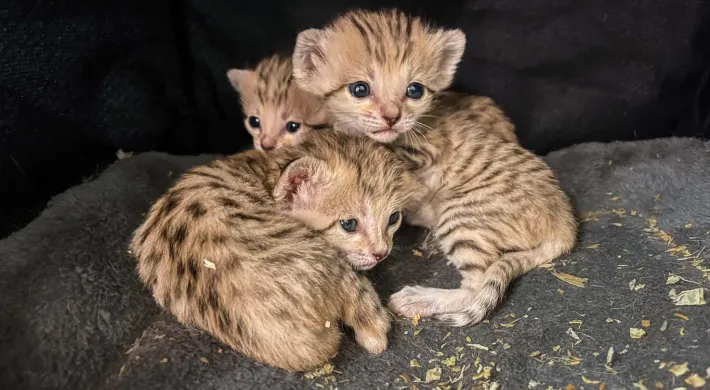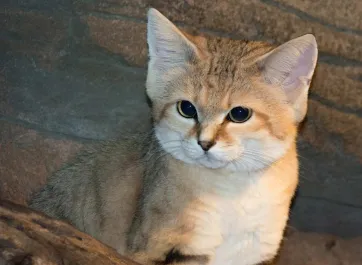North Carolina Zoo Asks Public to Vote on Names of Sand Cat Triplets
Asheboro, N.C. June 28, 2023 - The North Carolina Zoo is asking the public to vote on the “purr-fect” names for the sand cat kitten triplets born on May 11, 2023. The triplets are two females and one male.
People can vote on this online poll from among names chosen by zookeepers.
Voting is open now and closes Wednesday, July 5, at 4 p.m. (all EDT). The public can also access the poll through the Zoo's website at nczoo.org. There is no charge to select names. The winning names will be announced on Friday, July 7.
Females (top two names given to the female kittens)
Cleo (Cleopatra): Iconic Queen of Egypt, Greek name meaning “glory of the father”
Amira (“Uh-MEER-uh"): Arabic name meaning “princess”
Cyra ("SEER-uh”): Persian name meaning “sun” or “throne”
Safiya (“Suh-FEE-yuh): Arabic name meaning “pure” or “friend”
Noora (“NOO-Rah”): Arabic variation/spelling for name meaning “light” or “the divine light”
Male
Konshu (“CON-shoe”): ancient Egyptian god of the moon): Also, god of youth and healing
Jabari (“Jah-BAH-ree”): Arabic, brave/fearless): Swahili origin meaning “valiant, the brave one, fearless”
Horus (“HOR-uhs”): ancient Egyptian god of the sky): Represents qualities such as power and strength
Osiris (“Ow-SIGH-ris”): Ancient Egyptian god of the afterlife): Name derived from the word for “The Mighty One”
Ra (“Rah”): (ancient Egyptian god of the sun): King of all deities of ancient Egypt
Sand Cats- Small and Mighty
Sand cats are small and mighty hunters who kill venomous snakes in the desert. Though they appear adorable with big ears, eyes, and petite frames, looks can be deceiving. Zookeepers are quick to tell you they are wild, ferocious animals that should never be kept as pets.
Sand cats are native to the deserts of North Africa, the Arabian Peninsula, and Asia. Nocturnal in nature, they quickly adapt to the extreme climate of desert environments with very hot and cold temperatures.
The sand cat is one of the world's smallest feline species, weighing from four to eight pounds and measuring, on average, 20 inches long. The gestation period is around 60 days. Under human care, a sand cat can live to be 13 years old.
The cats have an exceptionally keen sense of hearing, which they use to detect animals under the sand and use their excellent digging skills to capture their prey quickly.
###
About the North Carolina Zoo
At the North Carolina Zoo, we celebrate nature. As the world’s largest natural habitat Zoo, we inspire a lifelong curiosity about animals for the hundreds of thousands of people who visit our Zoo each year. Our dedicated team of experts provides exceptional, compassionate care for the more than 1,700 animals and 52,000 plants that call our Park home. We also lead efforts locally and globally to protect wildlife and wild places because we believe nature’s diversity is critical for our collective future. The North Carolina Zoo invites all of our guests to witness the majesty of the wild in the heart of North Carolina and welcomes everyone to join in our mission to protect nature’s diversity. Visit NCZoo.org to begin your life-changing journey.
About the North Carolina Department of Natural and Cultural Resources
The N.C. Department of Natural and Cultural Resources (DNCR) manages, promotes, and enhances the things that people love about North Carolina – its diverse arts and culture, rich history, and spectacular natural areas. Through its programs, the department enhances education, stimulates economic development, improves public health, expands accessibility, and strengthens community resiliency.
The department manages over 100 locations across the state, including 27 historic sites, seven history museums, two art museums, five science museums, four aquariums, 35 state parks, four recreation areas, dozens of state trails and natural areas, the N.C. Zoo, the N.C Symphony, the State Library, the State Archives, the N.C. Arts Council, the African American Heritage Commission, the American Indian Heritage Commission, the State Historic Preservation Office, the Office of State Archaeology, the Highway Historical Markers program, the N.C. Land and Water Fund, and the Natural Heritage Program. For more information, please visit www.ncdcr.gov.



